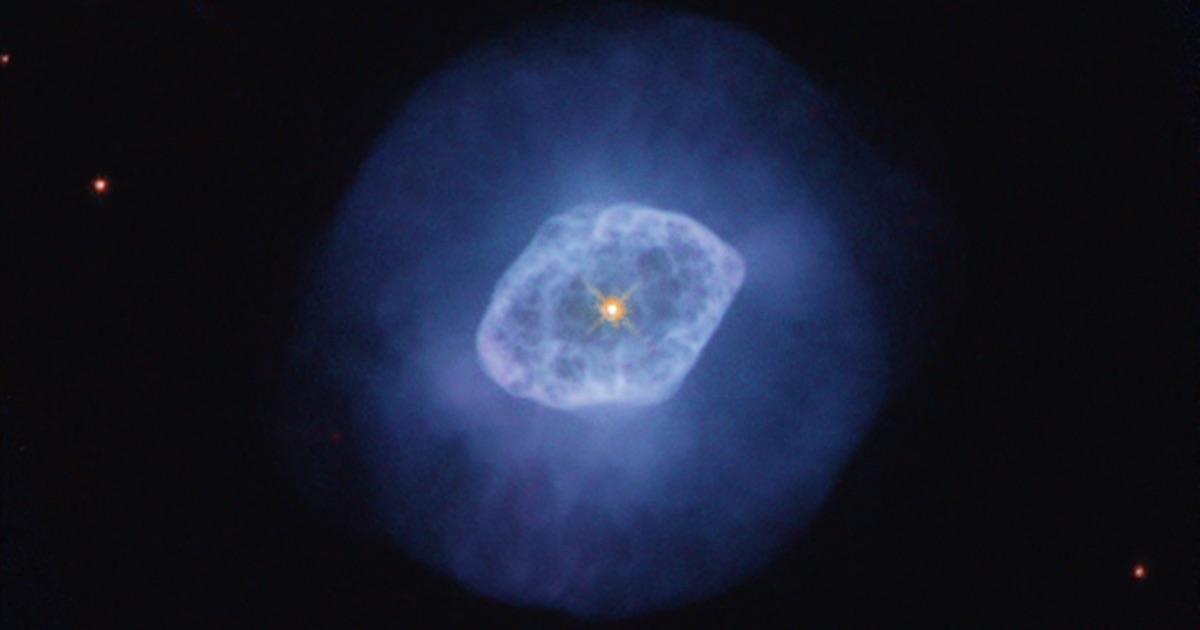 Evolution
Evolution
 Intelligent Design
Intelligent Design
 Physics, Earth & Space
Physics, Earth & Space
What Is the Evidence for Intelligent Design and What Are Its Theistic Implications?

Editor’s note: This article is an excerpt from a chapter in the newly released book The Comprehensive Guide to Science and Faith: Exploring the Ultimate Questions About Life and the Cosmos. We are presenting Dr. Meyer’s chapter as a series, in which this is the first post.
Biologists have long recognized that many organized structures in living organisms — the elegant form and protective covering of the coiled nautilus; the interdependent parts of the vertebrate eye; the interlocking bones, muscles, and feathers of a bird wing — “give the appearance of having been designed for a purpose.”1 Before Darwin, biologists attributed the beauty, integrated complexity, and adaptation of organisms to their environments to a powerful designing intelligence. Consequently, they also thought the study of life rendered the activity of a designing intelligence detectable in the natural world.
Yet Darwin argued that this appearance of design could be more simply explained as the product of a purely undirected mechanism — namely, natural selection and random variation. Modern neo-Darwinists have similarly asserted that the undirected process of natural selection and random mutation produced the intricate designed-like structures in living systems. They affirm that natural selection can mimic the powers of a designing intelligence without itself being guided by an intelligent agent. Thus, living organisms may look designed, but on this view, that appearance is illusory and, consequently, the study of life does not render the activity of a designing intelligence detectable in the natural world. As Darwin himself insisted, “There seems to be no more design in the variability of organic beings and in the action of natural selection, than in the course in which the wind blows.”2 Or as the eminent evolutionary biologist Francisco Ayala has argued, Darwin accounted for “design without a designer” and showed “that the directive organization of living beings can be explained as the result of a natural process, natural selection, without any need to resort to a Creator or other external agent.”3
The “Fine-Tuning” of the Universe
Interestingly, some contemporary physicists also now make similar arguments about the origin of what physicists call the “fine-tuning” of the universe. Since the 1950s and 1960s, physicists have discovered that the laws and constants of physics and the initial conditions of the universe have been finely tuned to make life in the universe (and even basic chemistry) possible. To many physicists, this discovery has suggested the activity of a fine-tuner or super-intellect — i.e., an actual designing intelligence. Yet other physicists now argue that the fine-tuning of the physical parameters of the universe manifests the appearance, but not the reality, of design. For example, physicist Lawrence Krauss has argued that cosmological fine-tuning does not provide evidence of intelligent design, but instead, “the illusion of intelligent design.”
Explaining Away the Evidence
So did Darwin explain away all evidence of apparent design in life? Have contemporary physicists explained away the evidence of design in the universe?
Proponents of the theory of intelligent design answer that question with an emphatic no. We argue that there are specific features of life and the universe that are best explained as the result of an actual designing intelligence as opposed to an undirected materialistic process (such as natural selection and random mutation) that merely mimics the powers of a designing intelligence. Moreover, we argue that the superior explanatory power of the design hypothesis makes the activity of a designing intelligence in the history of life and the universe scientifically detectable. This commitment to the detectability of intelligent design not only distinguishes the theory of intelligent design from materialistic evolutionary accounts of the origin of life and the universe, but it also distinguishes the theory of intelligent design from the idea of theistic evolution. Indeed, though most versions of theistic evolution affirm the existence of God, they deny that God’s designing activity is detectable in the natural world.
So the theory of intelligent design asserts that evidence of design is detectable in nature. But what evidence do proponents of the theory cite to justify this claim? Let’s consider two classes of such evidence and a scientific method of design detection that can be used to detect intelligent design in nature.
Next, “The Origin of Life and the Information Enigma.”
Notes
- Richard Dawkins, The Blind Watchmaker: Why the Evidence of Evolution Reveals a Universe Without Design (New York: Norton, 1986), 1.
- Charles Darwin, The Life and Letters of Charles Darwin, Vol. 1, ed. Francis Darwin (New York: Appleton, 1887), 278-279.
- Francisco J. Ayala, “Darwin’s Greatest Discovery: Design without Designer,” Proceedings of the National Academy of Sciences USA 104 (May 15, 2007), 8567-8573.
